A script is written, it’s greenlit by an executive and the most wonderful songs and designs are in place – Enchanted is on its way from page to screen! At its heart is an inspiration drawing (no pun intended!) on its producing studio Disney’s legendary legacy, a genuinely sincere homage to the classically told fairytales of old: Snow White, Cinderella and Sleeping Beauty.
As such, a major element to the film is where our heroine Giselle comes from, which happens to be an animated world well known to us from those earlier films. Who better than animator James Baxter, who’d previously brought his own Belle to life for Beauty And The Beast, to take charge of Enchanted’s animated sequences? And who better than the famed Tippett Studio to bring one such cartoon character to photorealistic life in our real world?
Jeremie Noyer speaks with James Baxter, and Tippett’s visual effects supremo Thomas Schelesny, about Enchanted’s enchanting 2D and 3D animated touches.
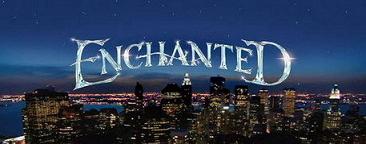
James Baxter: Animating A Traditional Disney Heroine
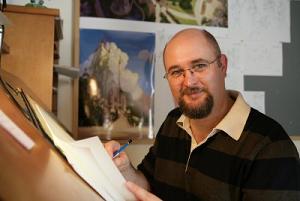 Literally, “animating” means to give “anima”, to give soul to a drawing. So, it was a true master animator needed to give soul to such an arch-Disney heroine like Giselle. A master animator like…James Baxter!
Literally, “animating” means to give “anima”, to give soul to a drawing. So, it was a true master animator needed to give soul to such an arch-Disney heroine like Giselle. A master animator like…James Baxter!
James Baxter was born in Bristol, England in May 1967 and moved to Bishop’s Stortford six months later. He started experimenting on little animation tests with an 8mm camera at age 16. After a one year art foundation course at Cambridge College of Arts & Technology, James attended the West Surrey College of Arts & Design. He studied animation for one year before leaving to work on Who Framed Roger Rabbit with Richard Williams in London. James started as an inbetweener and finished as an animator. In 1988, he moved to Burbank, California to work at the Walt Disney Company. He worked on three pictures and a short and then took a two year break to work in London at Passion Pictures and in San Francisco at Colossal Pictures, working on commercials for both.
In 1992 he returned to the Walt Disney Company and was a Supervising Animator on two more pictures. He made the move from Disney to DreamWorks SKG in 1996 and animated and supervised animation on six feature films. At the beginning of 2005, James left DreamWorks Animation to start his own studio – James Baxter Animation. In addition to animating and supervising, Mr.Baxter lectures frequently on the subject of animation at colleges and animation studios. His impressive credits include King Triton and Ariel, Belle, Rafiki, Quasimodo, Moses, Tulio and Spirit, among others.
So, it is in such prestigious company that we talked about his latest venture, coming back to Disney for a most beautiful homage to Disney classic animation.
 Animated Views: How and when did you come on the Enchanted project?
Animated Views: How and when did you come on the Enchanted project?
James Baxter: We were on it for about a year and a half. We first heard about Enchanted in October 2005. We heard it was happening. I just called the production, Kevin Lima’s office at Disney, and I told him to consider us, that we were available. He was interested about that, so we did a bit for the project. I think we’ve been against two or three other studios but, you know, fortunately, we got it.
AV: Why wasn’t it the Walt Disney Animation Studios who worked on that project?
JB: Well, at the time, they really didn’t have the facilities to do that kind of animation. I mean, they had animators there, but they had totally dismantled their hand-drawn pipeline. They didn’t have the scanning or the Ink & Paint facilities or any of that stuff in place. And also I think, because we’re a smaller studio, we were able to keep the costs down, you know, a bit more. So, the filmmakers were eager to stay under a certain budget. I think it would have probably been a little more expensive for them to do it at Feature Animation.
AV: What was exactly your role in the making of the animated sequences of Enchanted?
JB: We produced the whole animation part. We did not do the storyboards. Kevin and his small group of storyboard artists did that. Actually, Paul & Gaetan Brizzi did the first pass of the boards. They did the first run-through on storyboard and then the revisions were done by Kevin and his small crew of storyboard artists like Troy Quane. He’s a Canadian artist who did a lot of the storyboards. But then after the storyboards were finished and they had recorded the voices, then we took it from there. So we did everything from layout, final design, animation, all the way through to final color.
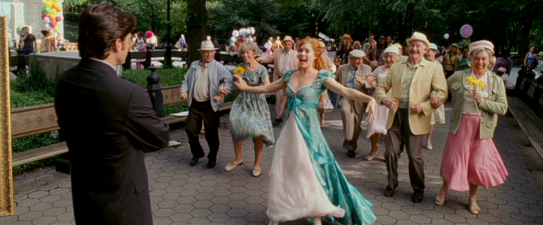 AV: How did you build your crew since, added to your usual crew, Disney veterans like Andreas Deja and Mark Henn came on board?
AV: How did you build your crew since, added to your usual crew, Disney veterans like Andreas Deja and Mark Henn came on board?
JB: Some of the design work was started before we got on the project. People like Harald Siepermann, who did a lot of design work on the picture before we got there, were hired by Disney to do that. We just did the final design work. For the animation part of the film, obviously, it was a much bigger crew than anything that we had done so far and I actually asked if I could “borrow” some animators from various studios. The good think about some of the really big studios is that they try their animators employed from film to film but sometimes, you know, there is like a little bit of a downtime when the animators aren’t that busy and they’re like waiting for the next film. So actually I was pretty lucky I was able to “borrow” Andreas and Mark. But also a couple of guys from DreamWorks. I basically borrowed Robert Domingo, William Salazar. You know, I have a very good relationship with Disney and with DreamWorks and I just said: “Listen, I need these guys because there is no one else in the world that really can do it at this level. So I can’t get a hold on that easily. Can I borrow them for like three of four months?” So I approached the studios and said: “Who can I borrow for three or four months?” I basically paid them, but they were still under their Disney or DreamWorks contracts. You know, like in the old Hollywood studio system where another studio would borrow a movie star? That was kind of like that!
AV: Can you tell me about your taking your inspiration from Art Nouveau for the design of the animated part of Enchanted?
JB: Well, we knew that we didn’t want to just copy the old Disney movies. We wanted a thing that had a style, that was cohesive. So, we thought “let’s approach this the way that Disney would approach this like in the 50s or something, when they would pick an artistic style like French illuminated manuscript painting for Sleeping Beauty. That was Eyvind Earle’s interest within that style who led him to take that style and make it Disney. So, that would be really suitable for us for this movie and Art Nouveau just seemed to be the natural sort of fit for this story because it’s very romantic and very organic, you know, with all those flowers and “floral” women into it. And we knew that the story of the beginning was very sort of pastoral. So it just seemed like a natural fit to take elements of that style and sort of Disneyfy them. I mean, it had to look very much like a Disney movie, so we couldn’t just reproduce an Art Nouveau painting, as fun as that would have been. That wasn’t exactly what we wanted to do. We wanted to make it look like a Disney movie but we wanted it to have its own style. So we put everything in this Art Nouveau sort of sensibility into that.
AV: The design of Andalasia was not only meant to represent an ideal world, it was also conceived in reaction to the art direction of the live-action part, in New York. Can you tell me about that?
JB: That was certainly part of the initial conversations we had with Kevin. His plan for the film was to contrast visually the two worlds. So, there was another reason why we sort of went towards Art Nouveau, because New York is such a straight-line place, with a lot of Art Deco work that’s straight and vertical. We wanted to contrast nicely the more curvy-line Art Nouveau style. And also, you know, in terms of color, Kevin wanted New York to be made of dull grey and our world to be much more pastoral, with sweeter and more natural colors.
AV: Did you do some research to have Giselle have touches of classic Disney Princesses?
JB: Yes. Giselle had to look archetypal, recognizable as a Disney heroine. She’s very much in that formula as far as she’s a cross between Cinderella and Ariel and all the Disney Princesses. But at the same time, she had to look enough like Amy Adams, for the transition to the real world to be believable.
 AV: All the same, did you go to classic scenes to draw your inspiration?
AV: All the same, did you go to classic scenes to draw your inspiration?
JB: There were specific scenes which we wanted to sort of wink of the audience with those, audience members that would recognize certain Disney scenes. That would be fun for them. The Prince picking up Nathaniel and dancing with him is a direct homage to Sleeping Beauty when the Prince picks up his father and dances around with him. That what Kevin Lima, the director, said to me when he was handing over that scene: “I want this to be like that, you know. I want it to be recognizable as that.” So, there were definitely specific sort of Disney moments that we referencing. Not copying, but just referencing.
AV: As you mentioned it, it’s about references. But at the same time, it’s about a new Disney heroine. How did you manage to take distance from these references and give her her own personality?
JB: Fortunately, we had live actors who were going to be these characters. So that was a great source of inspiration for us. All we really had to do was take our inspiration from Amy Adams and James Marsden. They were shooting the live action in New York while we were animating and we would send our tests to New York. The director would show them to the actors to show them what we were doing and he would select some shots he thought were really good for us to see and we would look at what they were doing. So, our inspiration as far as how to make these characters new and individual really came from the actors and what they were doing.
 AV: How did you make your animated characters look like the actual actors?
AV: How did you make your animated characters look like the actual actors?
JB: I took photos myself. I met the actors and took photos of them, except for Timothy Spall. He was cast rather late in the process and I never got to meet him. But I just got lots and lots of pictures of him, you know, from past movies. Fortunately, Timothy has such a unique face that he’s easier to caricature than the others.
AV: How did you share the task between yourself and the other animators?
JB: I animated Giselle with Mark Henn and Robert Domingo. So, it was basically the three of us and then a few people picked up a shot here and there, but it was mostly the three of us that did her. I had Andreas who did the Hag, when she’s the Wicked Witch. I was gonna do more of her when she’s like the beautiful queen but a lot of that footage changed and by the time it was ready to be animated Andreas was back at Disney again! So I ended up doing that. I also did all of the Prince myself and Andreas jumped in and did a lot of the Troll as well. It was really what was sort of ready and available to be animated, and everyone was really just excited to be doing something like this. None really bothered so much what they were doing. You know, it was just fun to do any of it.
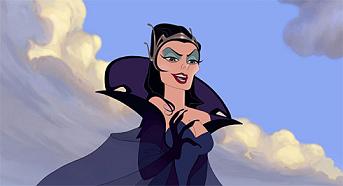
AV: The aim of this first part of the film is to present the best of Disney 2D animation. But, from the 90s on, Disney used computers in the making of their 2D animated films. How did you work regarding that aspect?
JB: We did everything on computer after the animation was cleaned-up on paper. So, after the clean-up drawings were scanned into computers, we did the way that you would do it just a couple of years ago. But it was important to us not to try and put in computer animated elements into it, just for the right feeling. I mean, we wanted to do our camera moves as if they were, you know, more like old time Multiplane camera moves. We also did a couple of little cheats while we were compositing, to make a few things look more dimensional, just to give it that slightly more dimensional feel that the director wanted. But we didn’t build anything in the computer for it. Besides, all the Ink & Paint was done on computer, the backgrounds were painted in Photoshop. So, yes, there was a lot of digital work on it, but hopefully, it looks like it’s all done by hand, which it is. It’s just done with computer, but it’s still people with their hands doing it.
 AV: Who are your masters in matter of traditional animation?
AV: Who are your masters in matter of traditional animation?
JB: Well, I never met him, but I’ve always admired Milt Kahl’s work a lot, and all of the Nine Old Men, really. But I studied his work I think more than the others. And then Richard Williams was my first real sort of mentor, in England, when I was on Roger Rabbit.
AV: This animated part is about the nostalgia of traditional hand-drawn animation. But did you improve it, also?
JB: Yes. I mean, it’s a strange project because on one hand, you’re trying to do something that feels nostalgic, really old-fashioned, to take the audience to a place that they remember, and on the other hand, you’re trying to do something, you know, which is new and really pushed the medium as far as you can, to make it better and better. It’s always important for me to try and improve as we go on, try to get better each time. On Enchanted, Kevin was very keen to have tones and shadows on things, like he would in the 90s, which was different from what you would see when they didn’t really do highlights and shadows on characters. They would cast shadows on the ground but you didn’t have that lighting shade on a character so much. It was just flat color. But like in the 80s and 90s, they started doing these sort of tone mattes to make character have light and shades on them. I’ve always felt that didn’t look that good and still like the old style, where you see the flat color. We were gonna do the highlights for sure but we were trying to find a better way to do them. So, we found some new ways with some of the technology to create those shadows and highlights on the characters, which feel a bit more like actual lighting and less like sort of fuzzy dirt…
AV: Since Kevin Lima was shooting in New York during the animation process, how did you work with him and how did you deal with your crew?
JB: He would hand over a sequence to me and tell me all his desires for it. We talked over about every shot, about what he wanted to see. But then he handed it over to me to make that happen. So I was sort of directing it from that moment on. We would just send him tests over the internet, for him to look at and then he would get on the phone or sometimes on iChat, often just via email because of the time difference. He would email us his notes. It’s not a perfect way to work but it worked out ok.
 AV: Have you heard about the idea of a sequel for Enchanted?
AV: Have you heard about the idea of a sequel for Enchanted?
JB: I have not heard about that. I’ve heard people say: “Gosh, I wonder if they’re gonna do a sequel!” but I haven’t heard any plans for anyone doing a sequel.
AV: Are you presently working on some project with or without Disney?
JB: We’re doing something without Disney but I’m not allowed to say what it is yet.
AV: What kind of memories do you keep from the time you worked at Disney.
JB: I mean it was a great time for me because that was my learning period when I did the most amount of learning there. The great thing about Disney is they have all these resources and you have access to all the old materials from the old films. So, if you wanna go and study the animation from those films, you can go to the archives and study them. There’s really no other place where you can do that.
AV: What does your experience on Enchanted represent to you in your career?
JB: For me, the best part about it was being able to sort of control the whole process. Before, on large movies, I’ve been just a small part of the process, just doing character animation. But having it at my own studio, being able to control the way everything was done was really enjoyable. That was a lot of fun to experiment and set up the best ways to do things!
Thomas Schelesny: Giving Giselle The Right (Visual) Effect
Enchanted is not only an homage to 2D animation. It acts in a way like a bridge between the past and the future, appealing the same way to state-of-the-art visual effects. But not just any effects! For to match the best traditional animation, one had to get the best in VFX and CG animation: Thomas Schelesny.
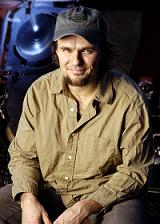 Just take a look at his background: Thomas began work as an animator and compositor in Vancouver, Canada, cutting his teeth on commercials and episodic TV shows such as, The X-Files, Sliders, and The Outer Limits. In 1996, he found himself at the Tippett Studio, learning under master animator Phil Tippett on films including Starship Troopers, The Haunting, and Hollow Man. Success as an animator brought him Supervising Animation roles on films such as Virus, Evolution, and The Matrix Revolutions.
Just take a look at his background: Thomas began work as an animator and compositor in Vancouver, Canada, cutting his teeth on commercials and episodic TV shows such as, The X-Files, Sliders, and The Outer Limits. In 1996, he found himself at the Tippett Studio, learning under master animator Phil Tippett on films including Starship Troopers, The Haunting, and Hollow Man. Success as an animator brought him Supervising Animation roles on films such as Virus, Evolution, and The Matrix Revolutions.
In 1999, Thomas moved into Visual Effects Supervision for the low-budget horror movie, Komodo – where his background in acting and theatre smoothly translated into the choreography and direction of live-action Animatronics & puppeteering. This eventually included all the Animatronic lizard rehearsal and on-set performance supervision. Next, he supervised the visual effects on increasingly elaborate projects at Tippett Studio, including animation-intensive films Son of the Mask, and The Shaggy Dog. For Enchanted, Schelesny’s distinctive high-energy approach to filmmaking and versatility enabled him to serve in several production roles at once – supervising the visual effects for the entire production, directing second unit visual effects plates, and choreographing on-set special effects.
In recognition for his work on Enchanted, the International Press Academy nominated him for a 2007 Satellite Award, for Best Visual Effects. Disney Legend Marc Davis used to say: “an animator is an actor with a pencil”. Now, the pencil can be digital, but no doubt Thomas Schelesny is still an actor!
Animated Views: Thank you so much for answering my questions on Enchanted!
Thomas Schelesny: Did you like it?
AV: I loved it!
TS: Oh, good! I was very proud to be part of that production. For me, it was a lifetime experience! I love talking about the movie because it allows me to re-live a small part of it. I know that films like Enchanted are not made very often and in general, it’s very difficult to make a film as successful as this one on a story level. I was honored to be part of the project and so happy to share it with the team at Tippett that I’m already quite depressed that it’s over! Working on a good one is quite bitter-sweet!
AV: I can imagine that! But first of all, I’d like to talk with you about what led you to specialize in character animation, and in special effets.
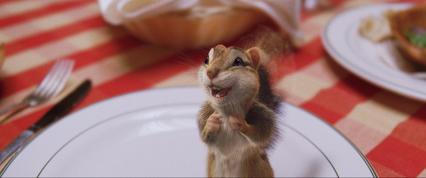
TS: Interesting question! Computer animated feature films didn’t exist when I went to film school. The way that I found my way into this part of this industry is that I started as an actor in high school and college. I then went into film school because it has always been my dream and I only admired visual effects films, and in particular the films of Ray Harryhausen. Those really captured me and I still watch them today. And while I was in film school, somebody approached me and showed me a brochure of a new technology called “computer animation”. It seemed to me very interesting and exciting and I wanted to try it out. So, after graduating from film school, the only place where I could practice that skill was a visual effects studio. After working on TV movies and TV commercials for a number of years, I then sent ten resumes to ten companies in California. I think I sent those in 1995. Nine of them responded and had me down for job interviews. One of them didn’t and that company was called Tippett Studios, the one company, the one man whom I really, really wanted to work with! I love The Empire Strikes Back. I love the first Star Wars movies. Those were a crossroad in my youth. Without those films, I would not be working in the film industry today.
So, I came down and didn’t like my experience in California with the job interviews. So, I went back to Canada because I didn’t feel that there was a work environment that would allow me to be a creative entity as they were very corporate, very office-based. So, I went back to Canada, thinking that I would be happy to work here where I’m allowed to be an artist and continue on my own in an environment that I’m comfortable with. And then, a year later, Tippett Studios phoned and said that they had misplaced and lost my resume and had recently found it again. So, they had me down for a job interview and I found myself here at Tippett Studios where I then started as an animator, that’s what I was doing in Canada, and worked my way into a lead animator, animation supervisor and then visual effect supervisor. So, you can see the path. For me, it’s all been in the area of performance and acting, and many of the same skills which I used in theater in college still apply today. I still go to acting classes in Berkeley!
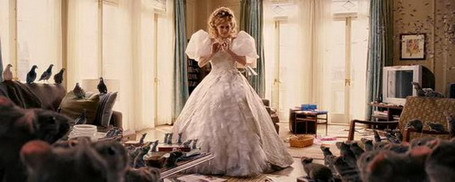
AV: From your point of view, what makes Enchanted so special?
TS: First of all, for me personally, it’s been the best filmmaking experience I’ve ever had. And all the credit for that goes to the director, Kevin Lima. He’s very collaborative and the best storyteller I’ve ever met. Everything that he said, every conversation that we had had to do with story. It had never to do with spectacle or going for an easy joke. It was always about the story. How do we serve the story? Visual effects, sound, music, everything served as some kind of metaphor that was to support the story. Nothing happened by accident. So, it was the most complete filmmaking experience I’ve every had in terms of attention to detail.
In terms of visual effects, what makes it so unique is that this is a visual-effect movie where the visual effects support the story, as opposed to a bad story being supported by visual effects. You see many of those movies where the opposite is true. And in this case, visual effects and a great story came together one place. So, I think, when people talk about the film, they don’t even recognize it as a visual effects film. For me, that means: mission accomplished! The point of a film is not for people to say: “hey, do you remember that big explosion?”, but: “do you remember those characters?”
A number of people approached me after lectures and screenings to speak to me about the character Pip as though he was actually there, not realizing that there were a hundred people back at Tippett all focused on bringing that character to live. So, again, mission accomplished! That was a difficult challenge to make Pip work like that. If you look at the scale of the work, we’re dealing with a very, very small character, Pip and also with a giant dragon. As well, after the dragon climbs outside the ballroom, then the Woolworth building and all of New York is all CG. We go from very small scale to enormous scale. So, that also was another unique challenge for this project in terms of just strictly visual effects.
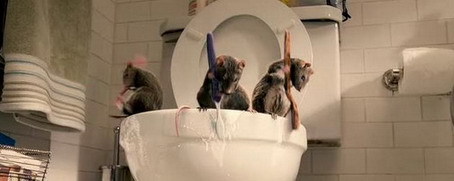
AV: You had several roles on Enchanted: supervising visual effects for the entire production, but also directing second unit visual effect plates and choreographing on-set special effects. Can you tell me about these different hats you wore during the production?
TS: Ok! When you’re shooting a film, there are generally two or more crews shooting it. We have ‘first unit’ which is the group which has all the actors and the director and then ‘second unit’ whose shots are not specific to have any particular actor in it. It may have hundreds of extras, maybe shot from an helicopter, but the main actors may not appear in that photography. So, we’re shooting visual effects plates. In fact, any photography, any time you capture a shot for a visual effect, that imagery, that background is called a ‘visual effects plate’, very old term, back when they used to paint backgrounds on glass, which is called ‘matte painting’. So, we’d have hundreds and hundreds of these shots to get: animals, Time Square, helicopter photography… all kinds of work like that where the director doesn’t have time to be there. He’s working with the actors on a different scene somewhere else. In those cases, I was given the reins to direct the crew, how we captured all of that material down to men selections, how the camera would move and what the people, the extras would be doing in that imagery while the camera’s rolling. So, that would be second unit.

AV: Now, what about “choreographing on-set special effects”?
TS: There you go! Let me give you an example from the movie, the Happy Working Song sequence where the animals are helping clean Robert’s apartment. For example, one shot where this pigeon steps on the pedal of a garbage can so that the garbage can opens up and the flies bring out a wash cloth into it. Well, that garbage can is real. That is a on-set special effect. That’s something controlled by wires or magnets by somebody hidden outside of shot. So, all that needs to be choreographed and timed to the music of the sequence. Throughout that one song, there were many, many instances where something happens in the background. It would not be CG but has to happen on a very specific moment in that shot. Now, we were working with the floor effects crew to rig it properly, then design its movements with them and do all that in time while shooting the backgrounds.
I think the high point for that was the entire sequence at the end of the movie when the beast is carrying Robert. In order for that motion to be realistic, we needed Patrick Dempsey to be suspended in some kind of a mechanical rig that simulated a giant beat holding on to him and the movement of the beast’s arm. So, what I did was: I designed an arm with a weight on the opposite side and a mechanical wrist and a hand to hold on to Robert. I designed that in my computer and presented that to the special effects supervisor and said: “I need you to build this for me.” I designed how the rig would work, by building an animated 3D proof-of-concept in Maya. And when we got on to the set to shoot it, prior to shooting, over weeks leading up to it, I would rehearse with the stunt crew as well as special effects artists who were operating this machine. So, there were five people operating this machine, all at once, all creating natural arm and the right movement. The goal was that we would have Patrick in a harness, strapped to one end of this 20 foot-long arm and we would then be shooting him in front of a green screen. With this movement, very carefully choreographed to match the way the beast would move, we would then wrap a computer-graphic beast hand around him in post-production.
It’s very difficult because you need to know in advance all the movements of the beast before you can choreograph this material. So, what we did was, we previsualized the sequence. Back at Tippett Studios, the crew here did a rough animation path to show how the different movements might be for each shot. Then, when the director approved some of these movements, we would then try to re-create them on the set, using this mechanical arm. What that means then is that Patrick Dempsey moves realistically. When the arm moves left and right, Robert, the character, is leaning left and right. He’s being thrown back and forth realistically. So, you see the weight and the dynamic physics involved.
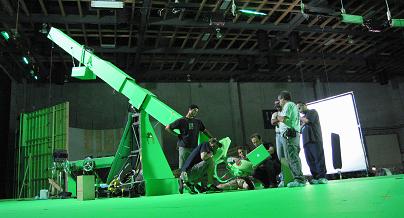
AV: But your assignment of the film was not limited to Tippett Studios…
TS: Yes, I also worked for Disney, supervising all of the vendors involved. Tippett Studios did 320 shots, another studio called CIS did 36 shots of wire removal, that means painting out the person who was hanging the wires on set, and then Reel FX did the four shots where, near the end of the movie, you see this transition where the picture becomes a pop-up book. The page turns, the pages lays down in a different scene. They did those shots. I would split my days. I would work at Tippett in the morning, getting their day started, and as soon as I finished getting the day started for Tippett, I then got on the phone immediately to call the other vendors, or I would fly to Los Angeles or Dallas, TX to physically see them. It was hectic!

AV: Now, can you tell me about your approach to Pip. I mean, how did you go from the animated, hand-drawn animated character to the CG one?
TS: All of the hand-drawn animation was created by James Baxter at Baxter Animation and I had several video conference calls with him where he discussed the character with me, and then they send us some rough animation tests. Pencil tests as well as some character model sheets, which are diagrams of the 2D character doing different things. That allowed me to see where they were taking the character and what their attempt was. There were some major similarities between the 2D Pip and the 3D Pip. One similarity is that, although the CG Pip is photorealistic, the stripes on his body are similar to a real chipmunk, but they’re actually closer to the layout, the position of the stripes on the two-dimensional Pip. Also, he has little black eye brows and real chipmunks don’t have that stuff. So, we respected the color layout, we also looked at the overall colors that they used in the 2D-animated Pip, and then we moved onto the 3D Pip.
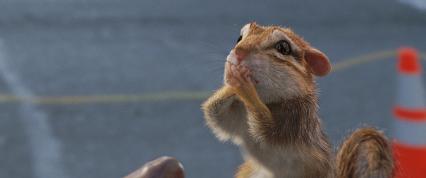
AV: But it’s not only about design, it’s also about character personality.
TS: You’re quite correct. At that point, we understood we had one major challenge. The kind of humor that Pip is engaged in is very sweet. It’s not typical of the type of humor that we see today. Often today, most of the humor that we’re exposed to is always cynical, disapproving, critical and very irreverent. Pip is not like that, and Enchanted is not like that at all. Enchanted embraces the genre of Disney feature animation. It does not make fun of it. It embraces it and honors it. I’ve known James Baxter to be one of the top-three animators in the world today, so we recognized that we had a great challenge for the 3D Pip to do justice to the Pip which they created. What we did was: we began to research.
The way Pip and the Narissa beast are handled is much in line with feature animation rather than visual effects. Visual effects, usually, are more action-oriented, action-animation like bombs, explosions, monsters and spaceships. That’s traditional visual effects work. The kind of work which Pip demanded was more along the line of feature animation. So, I began to research some of the different feature animation studios, which are inexistent today, and I quickly realized that, in all of my research, they all had one common thread. They all researched traditional feature Disney animation methodologies. So, that’s exactly what we did: we went back to researching Disney of the 1930s, 40s and 50s, trying to identify, specifically in terms of animation, how the animators approached their work. We found out that there was a great deal of personal responsibility given to each animator, an enormous amount. So, we needed to do that same thing.

Tippett did not have hundreds of animators. I believe Enchanted had 15 animators on the show. That’s a very small amount. So, what we needed was each animator to be able to animate Pip and the Narissa beast interchangeably. So, I sat down with the lead animator, whose name is James Brown, and the animator supervisor, Tom Gibbon. What we decided was that we were going to go back to the basics, research the basics again: simple things which animators take for granted. We wanted to think about it again. For example, “squash and stretch”, “anticipation”. Then, we came to one critical point: developing a sense of appeal for the character. All of these concepts I’ve just listed come directly from the teaching of Disney feature animation and they’re still valid today. Although we talk about it and acknowledge it, it was critical that we refresh our memory and focus very hard in particular on getting the appeal. That’s why, I believe, Pip is quite successful. He’s a very appealing character.

AV: How did you manage to make him so believable?
TS: What we did was, we wrote a backstory for each of the CG characters, for Pip and the Narissa beast. A backstory is a description as to what Pip was like before the movie occurred. What was Queen Narissa’s backstory before the movie started? Things like that which we wrote here internally. What that allowed us to do was have a greater understanding for the characters and their place in the movie. So, we had a better understanding that Pip truly is a fish-out-of-water in New York, and that his greatest strength is his ability to speak. Because when he’s in 2D world, he’s the only animal who speaks easily. He speaks very clearly in the 2D animated world and when he comes to the real world, that’s taken away from him. How do you deal with that? How would anybody deal when your greatest social strength is missing? And then, we began, as a group, to describe how that might manifest itself in his movements and personality.
When he first arrives in New York, he comes out of the manhole and starts very confident trying to talk to Prince Edward and then he realizes he’s lost his voice and becomes very apprehensive. So, we spent the rest of the movie slowly empowering him so that, at the end of the movie, he helps destroy the beast. It also serves the role as being a guide for the audience and serves as almost a moral compass since Pip represents the audience’s moral in the film. If you look at the film, the only people who know what’s going on in the story, the only people who know that the Queen is trying to kill Giselle are Pip and the audience. Every screening I’ve gone to, I always hear little children yelling at Pip: “Pip! Don’t do this! Tell her it’s poisoned!” Because they experience the film through Pip.
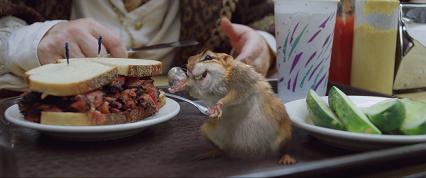
AV: Since Kevin did the voice of Pip. How did you work with him on that?
TS: It’s funny the way Kevin did that! As we began to move from principal photography into post visual effects, which means that we had finished shooting the movie but now it was time to start animating Pip, the question arose: “Does he make any sounds? What sounds might they be?” So, Kevin did some tests of his own voice. I don’t believe there was a specific recording session even scheduled for it. It was very informal. But he provided us his own voice for us to do timings to Pip, to time his mouth to. And his vocalisations were so perfect and over the ten month that we were doing the animation for Pip, we grew so used to it, and we had animated so carefully to respect every small nuance of Kevin’s voice that it was left in the movie. Again, I think that came down to the level of detail, how seriously we took everything that the character did, back at Tippett. Every sound we heard, everything, every sound that Susan Sarandon makes in her voice track, all of that very careful researched by our animators here, to find what the deeper meaning of each line was.
AV: How did the actors interact with Pip on set?
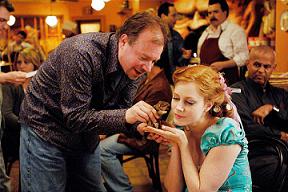 TS: Every single shot where you see Pip in the real world is all CG. Which creates a problem. The problem is: what does everybody look at? What do the actors look at if there’s nothing there? Where should they look? How do they pantomime? How do they perform to nothing? So, in the scenes where the actors need to look at a very specific spot, I would often be hidden next to camera, or somewhere just outside of the shot, with a small poll and a target on the end so it tells them to look at that spot. And that’s where Pip would be. And then, when we got into post on the show, we had to digitally paint out that stick so that you wouldn’t see it and then we would add Pip. And for all the scenes where the actors need to hold Pip in their hands, I would rehearse with the actors for 15 minutes prior to photography. I would have with me a small stuffed chipmunk for them to hold in their hands to practice, so that they understand how big their hands should be to hold that chipmunk, how tall the chipmunk is.
TS: Every single shot where you see Pip in the real world is all CG. Which creates a problem. The problem is: what does everybody look at? What do the actors look at if there’s nothing there? Where should they look? How do they pantomime? How do they perform to nothing? So, in the scenes where the actors need to look at a very specific spot, I would often be hidden next to camera, or somewhere just outside of the shot, with a small poll and a target on the end so it tells them to look at that spot. And that’s where Pip would be. And then, when we got into post on the show, we had to digitally paint out that stick so that you wouldn’t see it and then we would add Pip. And for all the scenes where the actors need to hold Pip in their hands, I would rehearse with the actors for 15 minutes prior to photography. I would have with me a small stuffed chipmunk for them to hold in their hands to practice, so that they understand how big their hands should be to hold that chipmunk, how tall the chipmunk is.
In the scenes where Giselle picks up Pip and he kisses her on the cheek, how far should her hand be from her face? For Pip’s mouth to reach her cheek? So, we would practice with this stuffed chipmunk and I was very lucky, because we were blessed with excellent physical performers on this film: Tim Spall, Amy Adams, James Marsden, Patrick Dempsey, they’re all excellent physical actors and were very good at understanding the abstract of working with nothing. It’s a huge challenge but in watching the film, I don’t think there is a single shot where it looks like the actors don’t see Pip. He has a presence, and the actors have a “action and reaction” to Pip, which is very realistic. That’s because of rehearsal and a careful description as to what the scene will tell.
AV: How did you create the design of the Narissa beast?
TS: Excellent! That started out as a drawing that was provided by Crash McCreery, an independent character designer who’s worked on many films. It was based, loosely, on a Chinese dragon, then we moved into sculpting a clay maquette, a statue, that was sculpted here at Tippett Studios. After Kevin saw that sculpture, he gave us some notes to make some adjustments and then, after his approval, we painted that sculpture to look like the kind of colors he was describing to us. If you study the design of the character, you’ll see that all of the elements of the dragon come from Queen Narissa’s dress: the color, the scales, her crown, turned into the horns on the beast, again, everything serving as a metaphor for something else in the film. The transformation from the Queen into the beast was handled much in the same way as Maleficent in Sleeping Beauty.
Also, there is a lot of technology that we had to develop for the film – for example, the look of Queen Narissa’s skin, which has a pearl-escent, opal-escent, irid-escent quality that required some specific research and development to come up with as well as setting up all of the CG character’s face so that it can move properly. We had to allow enough control of the face so that the animators can get the expression to look natural and real. You can see by the level of movements in the Narissa beast that Kevin did not want a talking dinosaur. He wanted a dragon that follows the look and the movement characteristics of a classic Disney animated character. Which meant that for the Narissa beast and Pip, we needed to do a lot and very careful facial animation. Because he didn’t want a dinosaur. He wanted a dragon that’s personified as Queen Narissa.

AV: The eyes of the dragon are also very unusual for such a kind of beast, be it in terms of design or in terms of expressiveness.
TS: It’s funny you mention that. The eyes themselves, the shape of the eyes, those are the one thing that we took directly from Susan Sarandon. Although the eyes had to fit onto the dragon’s head, had to respect the skeleton structure of the dragon, the shape of the eyes and the shape of the eyelids and the eyeball itself were taken directly from her. It was the one element that Kevin wanted to take as a touchdown back to the actress.

AV: What was the most complex sequence you had deal with on Enchanted?
TS: All the sequences had their unique challenges. On Happy Working Song, the big challenge was that everything had to work to the music. So, we had to have all the camera moves, all the on-set special effects and in the end, all the CG animals doing things to the music. That was the challenge for that sequence. Pip as a character was challenging just for the things I outlined in terms of shooting it, working with the actors and then getting the characterization correct. The Narissa beast was interesting because the challenge was exactly the same as for Pip, except now I had to describe to the actors a 75-foot-long lizard whose head was very high up the ground and was very frightening. That was done with similar techniques but I had to use a very long poll to show them where the top of the head would be and then I would run around with that poll showing them where she’s moving, make them look at the top of that poll and react to the beast.
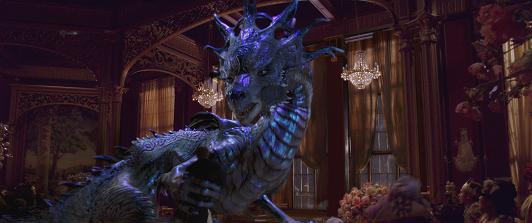
The biggest physical challenge was supervising the movement of the arm which was holding Patrick Dempsey. That was the most difficult thing to physically choreograph on set, because it’s not a digital Patrick Dempsey, it’s a real character. Technically, the most challenging thing to shoot was the finale, on the outside of the Woolworth Building. That was a huge challenge, mainly because we were working on very, very small set pieces. Anything Giselle is physically touching when she is climbing on the outside of the building is a real set piece. But everything that’s beyond her reach is all digital. The storm is digital, the rain is digital, New York is digital, the rest of the building is digital and so is the beast.
The challenge for that is: “how do you shoot that?”. It’s difficult to know what would be seen in the rest of the picture. For example, if you’re pointing up the set piece past Giselle, what part of the CG building will you see? The only way to know that is to pre-visualize the entire sequence in advance, establishing all of the camera angles in the computer, prior to photography and then show that to the director: “here’s what the CG building would look like with this man, at this angle, at this position.” And then, based on that information, they can extrapolate that from the small set piece what part of the building we will physically see in the background. So, that would help the director and the director of photography visualize what would eventually be added to the scene. That was a huge challenge that required careful pre-visualization so that we could capture the composition that Kevin was after. It’s difficult to know where to place the camera when you have no building and no beast and you want Giselle and the beast in the same shot. You don’t know where to put the camera because the set piece is so small you can’t tell where the building really will be. All had to be thought out in advance. So, that was the one sequence that required the most planning.
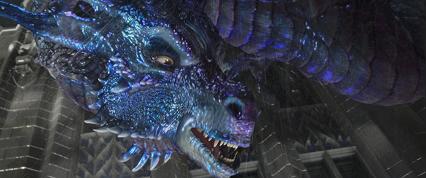
AV: While listening to you, I realize that there’s magic behind the magic of filmmaking.
TS: It’s what attracts me to filmmaking in general. It’s that it’s a team effort. While you’re shooting the film, you meet a hundred and fifty strangers, and by the end of photography, you’re all best friends. Because you’re all fighting for your survival because you’re trying to do the very best job you can under very challenging conditions. For example, we shot for a couple of weeks in Time Square in New York. Time Square is the most crowded environment I’ve ever been in. Traffic, thousands of people, hundreds of extras all dressed like New Yorkers and you only can control a small portion of Time Square for the film. It’s almost like being in a riot. It’s a little frightening! These are some of the challenging conditions you have to work under. So, as a crew, you’re all bound very closely when you realize how much you rely on each other to get through that.
One of the technologies that we develop at Tippett which I’m very focused on are the people. Because I can buy computers. In fact, today, you can go out to any computer store and purchase the very same computers that we use here. You can go out and purchase the same software that we use here. All of that is generally known and available to the public. It’s not as special as the people are. It’s the training, the camaraderie, the trust and still the artists. That’s the technology that I foster and I protect because without that technology –the artists-, nothing happens. The computer are worthless, the software is worthless. Without the people, nothing gets done. And I’m very aware of that. It’s no individual person. Myself as a visual effects supervisor, I did not create the visual effects. Not by myself. That was part of team. No individual artist at Tippett created all the visual effects. They were part of a team. We’re aware of that and again, it’s building that level of trust and knowing that we’re doing the right thing together as a group that’s what’s gives me the motivation I need to come to work everyday. It’s that teamwork.

AV: What are you working on now?
TS: What I am personally working on? No comment! But Tippett Studios is currently working on a film called South of the Border. I’m not on that film but that’s the one show that we currently have in production right now. It’s another Disney film!
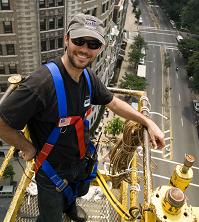
Our special appreciation to James & Kendra Baxter.
Our special appreciation and gratitude to Thomas Schelesny and Lori Petrini.
All images ©Disney/Tippett Studios. All rights reserved.


